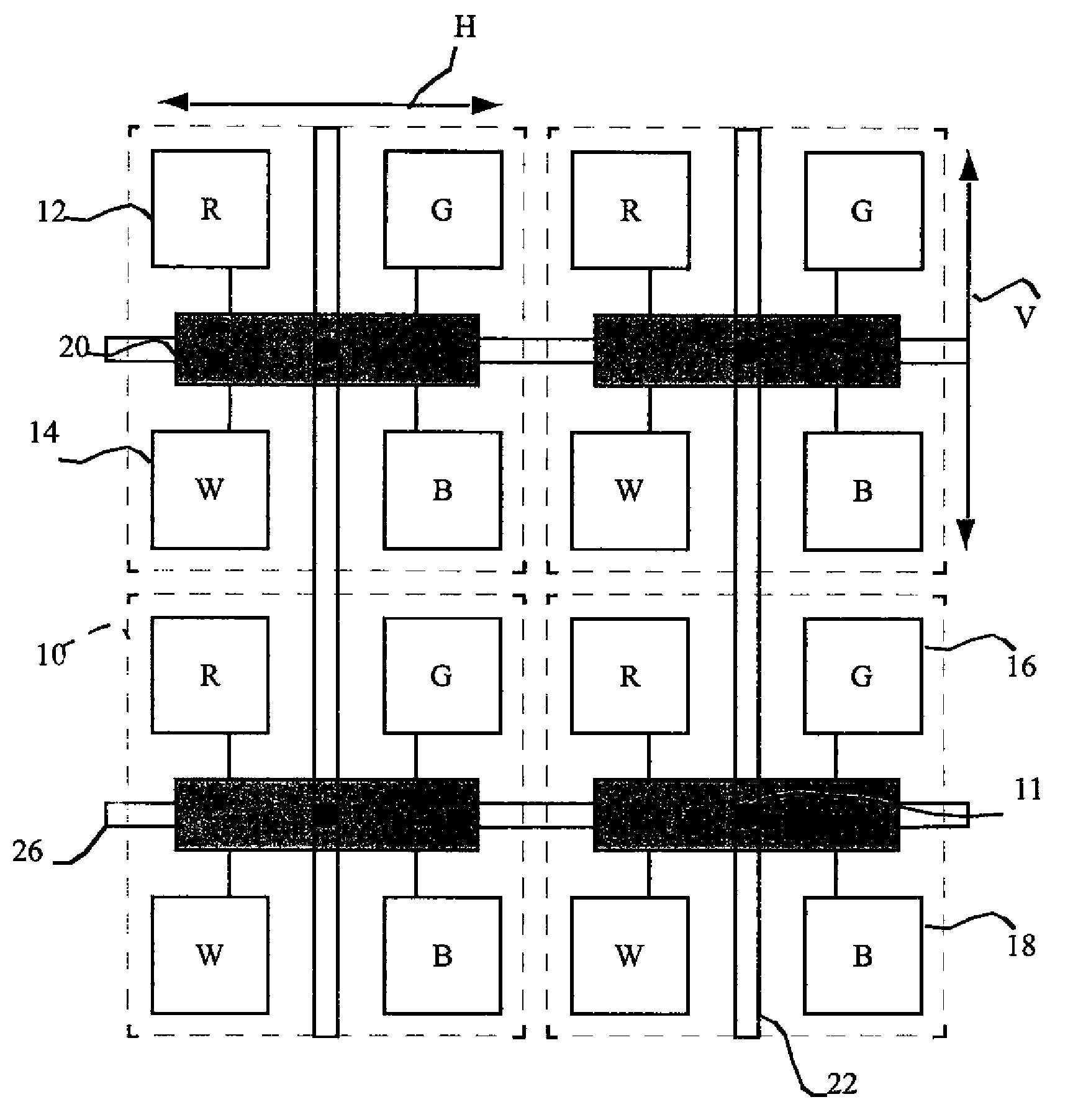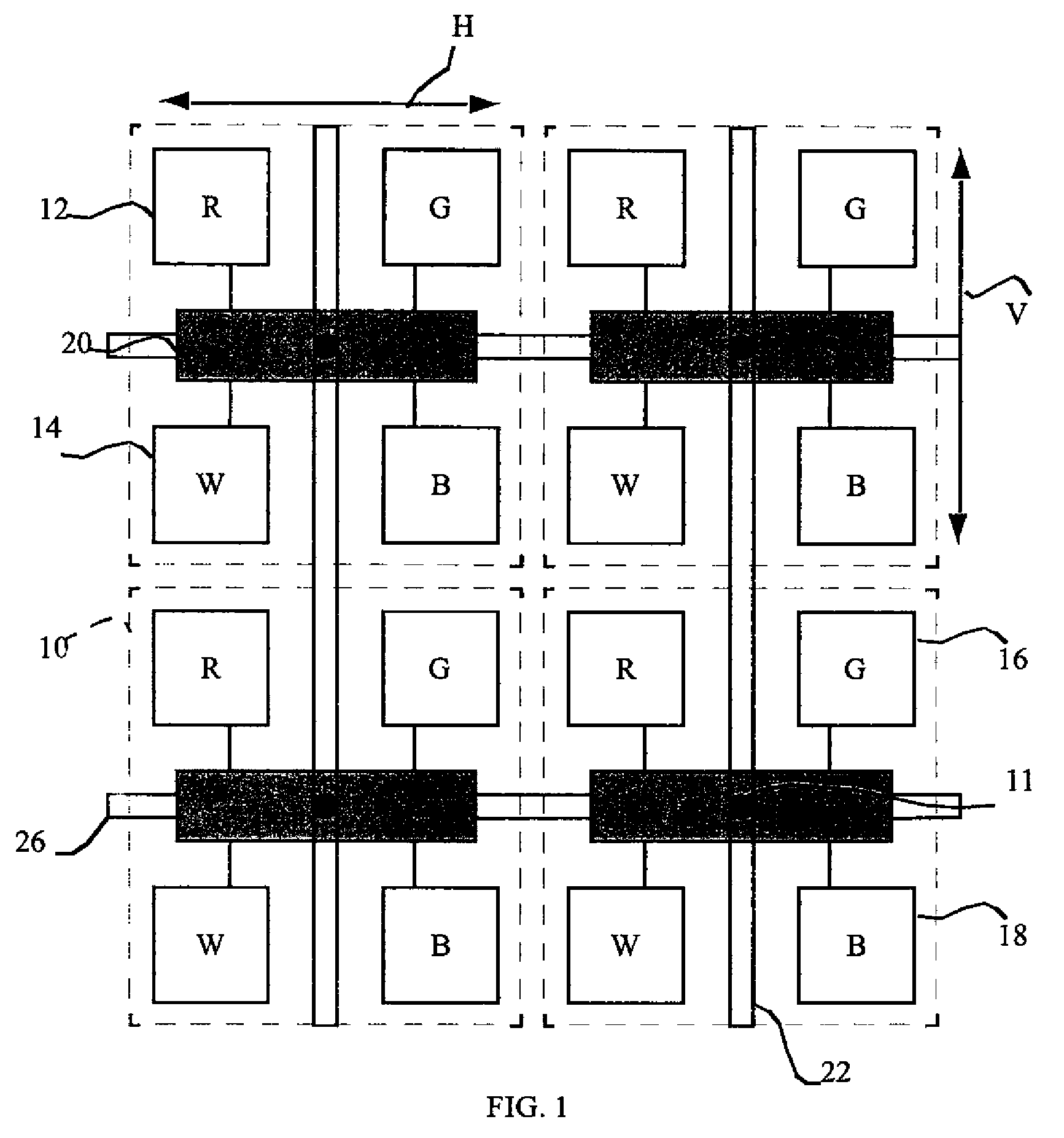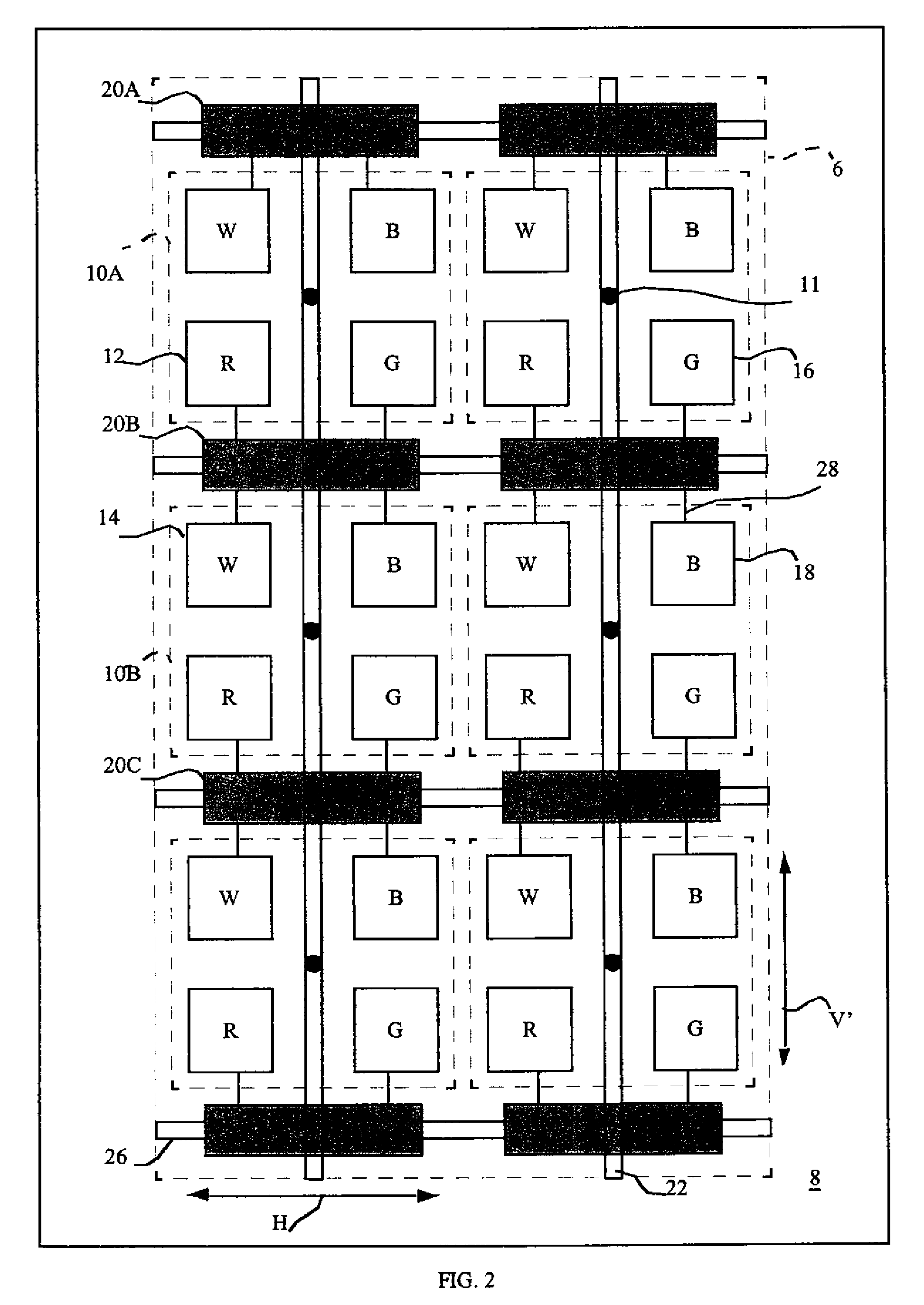Dividing pixels between chiplets in display device
a display device and chiplet technology, applied in semiconductor devices, digital transmission, instruments, etc., can solve the problems of non-uniform electrical performance and visual appearance of display devices employing such materials, affecting the image quality of display, and large thin film transistors (tfts) made from amorphous or polycrystalline silicon are relatively large, so as to improve color mixing and pixel uniformity
- Summary
- Abstract
- Description
- Claims
- Application Information
AI Technical Summary
Benefits of technology
Problems solved by technology
Method used
Image
Examples
Embodiment Construction
[0032]Conventional active-matrix displays employ thin-film transistor circuits comprising amorphous or polysilicon films deposited on a substrate to control the display elements. These thin-film transistors, however, have much lower performance than the crystalline silicon devices typically used in integrated circuits. An alternative control method for active-matrix devices employs a plurality of chiplets located over a substrate in the light-emitting area of a display. Each chiplet is formed on a substrate independent of the display substrate and includes circuitry and connection pads for driving the electrodes of the light-emitting or light-controlling elements in the display and for responding to signals from a controller external to the display.
[0033]Referring to FIG. 1, a partial schematic of a display device illustrates a plurality of pixels 10 including four sub-pixels defining a light-emitting display area. The display device further includes a plurality of chiplets 20 locat...
PUM
 Login to View More
Login to View More Abstract
Description
Claims
Application Information
 Login to View More
Login to View More - R&D
- Intellectual Property
- Life Sciences
- Materials
- Tech Scout
- Unparalleled Data Quality
- Higher Quality Content
- 60% Fewer Hallucinations
Browse by: Latest US Patents, China's latest patents, Technical Efficacy Thesaurus, Application Domain, Technology Topic, Popular Technical Reports.
© 2025 PatSnap. All rights reserved.Legal|Privacy policy|Modern Slavery Act Transparency Statement|Sitemap|About US| Contact US: help@patsnap.com



